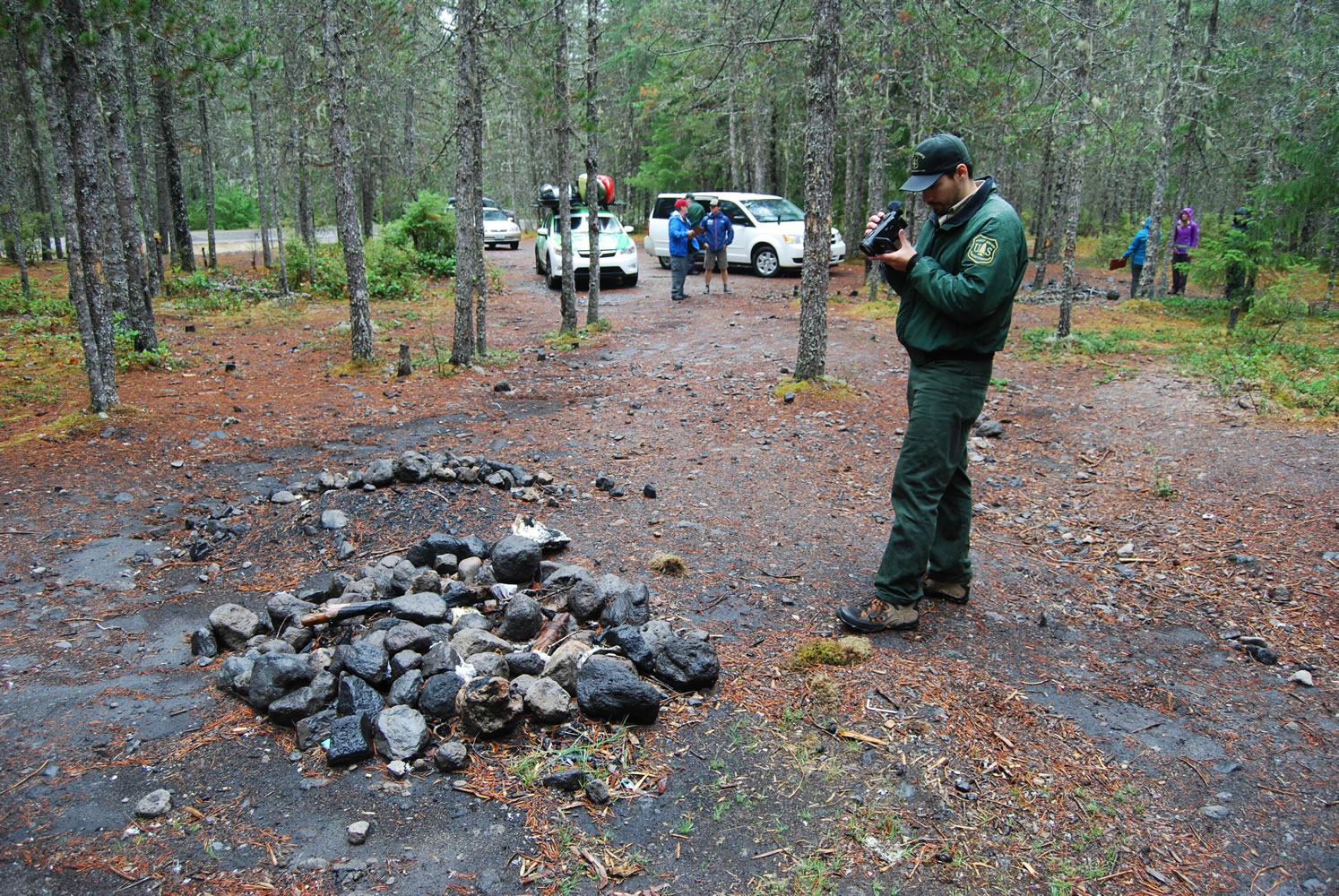COUGAR — U.S. Forest Service workers and volunteers fanned out through a campsite a few yards from the upper Kalama River.
They noted that the campsite was closer to the river than regulations allow. Jeep tracks were gouged into the dirt. Garbage had been dumped in the brush.
“There’s human waste everywhere,” lamented Bob Appling, a volunteer with the Mount St. Helens Institute.
Bright orange letters were spray painted on about a dozen trees.
“That just happened last weekend,” said Jennifer Fujii, a recreation staff member for the Gifford Pinchot National Forest.
The messy campsite was an extreme example of the trashing that the Forest Service is trying to minimize as hunters start to set up camps for upcoming deer and elk season.
Last week, members of the Subaru Leave No Trace program held several workshops on how to set up a camp.
The campsite survey crew focused on the woods along Road 81, near the Kalama Horse Camp. In summer and fall, campers congregate in the numerous clearings in the woods.
The site with the painted trees has been used for a long time, Fujii said.
“It’s getting progressively worse,” she said. The volunteers rated it the worst condition on their scale, using a checklist of how much the ground and trees have been disturbed.
“It’s a growing problem out here,” Fujii said.
The area is one of the closest in the Gifford Pinchot to Interstate 5 where camping is allowed, and it is easily accessible on a paved road.
PacifiCorp campgrounds along the Lewis River are often full, Fujii said.
“That’s pushing people up here. It’s the first place they get to.”
The area along Road 81 is also close to private land, where camping is prohibited and landowners have blocked roads with gates and boulders. In past years, hunters have camped on Forest Service property and walked into private land to hunt.
The Forest Service has considered building another campground south of Mount St. Helens. The agency’s campground at the source of the Kalama River was closed after the 1980 eruption of Mount St. Helens and is considered too sensitive an area to re-establish camping there.
The Kalama Horse Camp is designed for equestrians.
But Fujii said the Forest Service has limited funding for building new campgrounds or cleaning up camping messes.
One thing the agency can do is block access to areas, however.
After documenting the abuse at the first campsite, the workers drove a few miles south on Road 81 to see the results of doing just that.
A campsite that still had vehicle access had a rack made of saplings.
“They probably cut a tree down to do it,” Fujii said. “If you were a camper, would you want to encounter it?”
Past that point, the Forest Service in 2012 blocked the spur with a series of mounds and ditches that would stop even the most determined four-wheeler.
“We blocked it off because of the impact to the river,” Fujii said.
Indeed, the campsites past that point are nicer along the Kalama River, which at this point is a gently gurgling stream a few yards wide.
“This one’s recovering pretty good,” said Appling, who leads guided hikes and kayak trips for the Mount St. Helens Institute.
Still, the results of past abuses are evident, such as an area where many of young trees are only stumps.
“They did a thinning operation out here,” Appling quipped.



